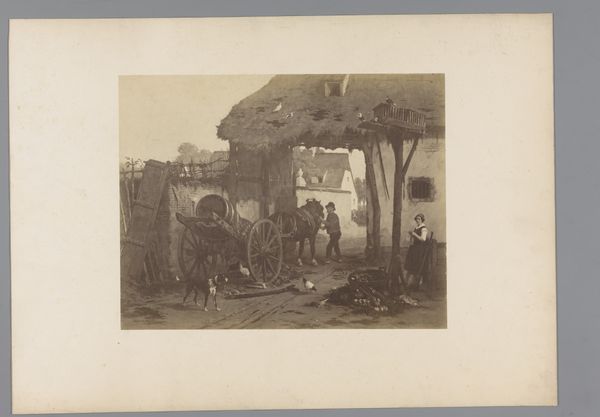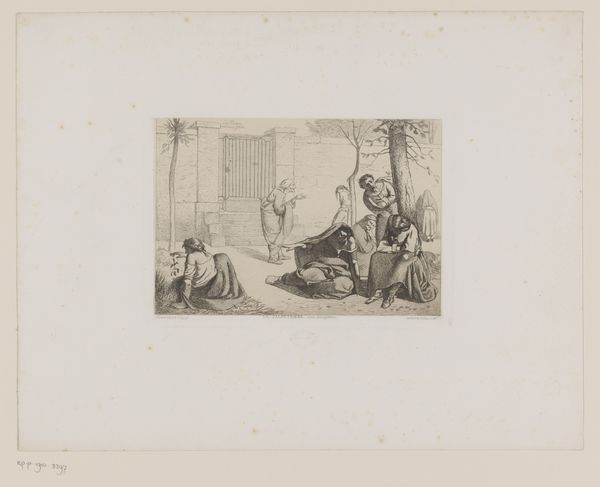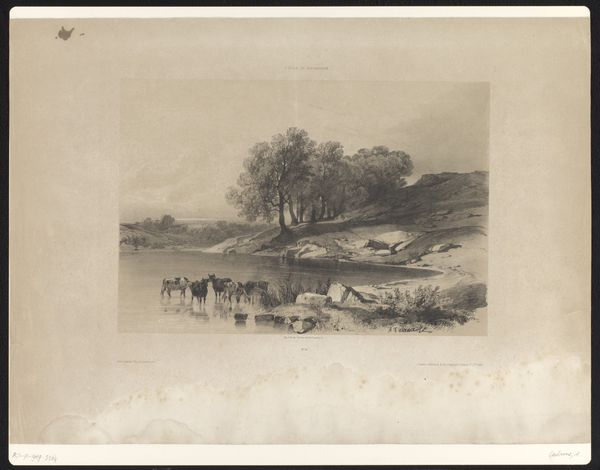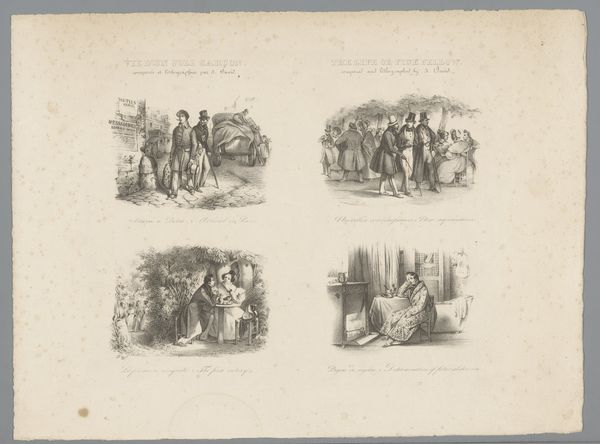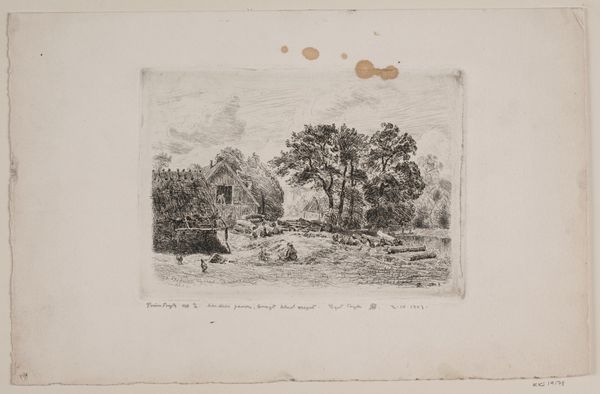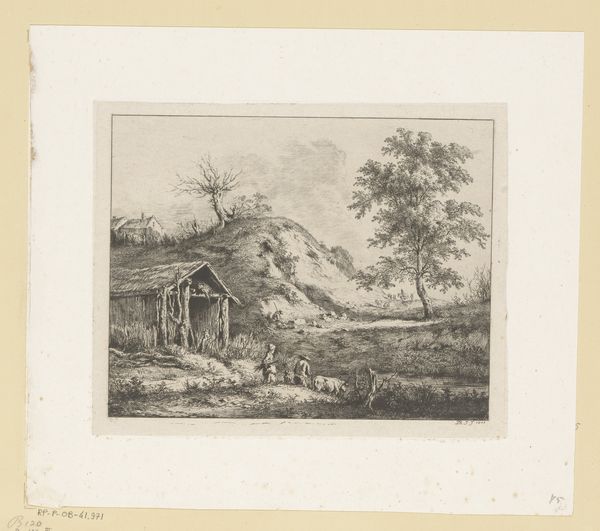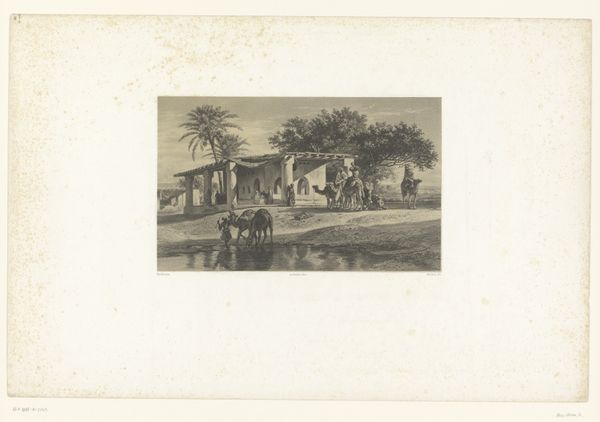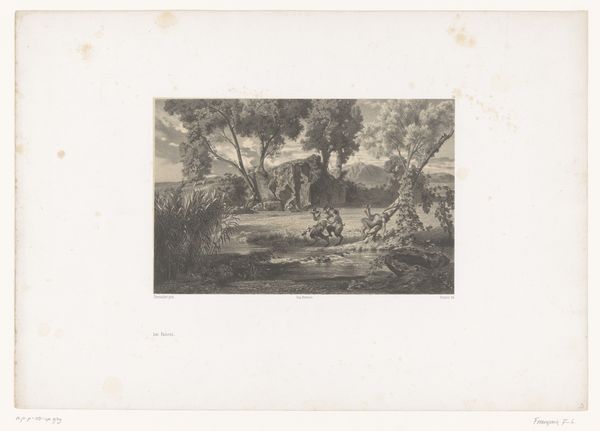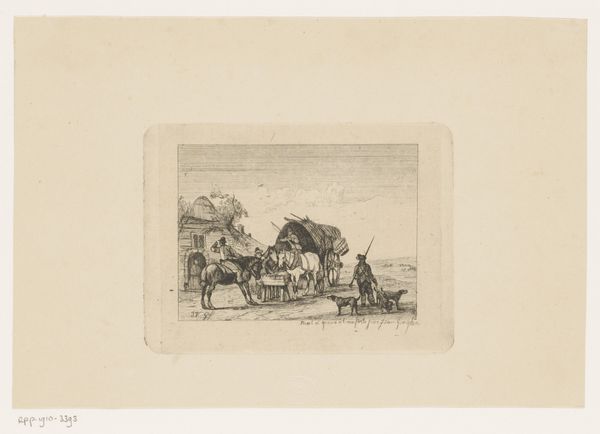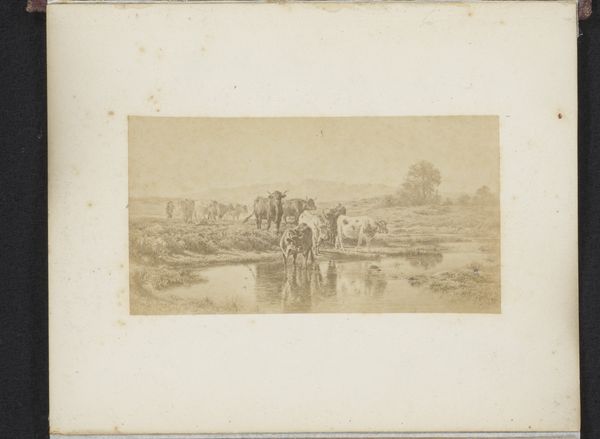
Gezicht op een openbare tuin, met rechts een gebouw waar wafels verkocht worden 1859
0:00
0:00
print, etching
# print
#
etching
#
landscape
#
park
#
genre-painting
#
realism
Dimensions: height 171 mm, width 274 mm
Copyright: Rijks Museum: Open Domain
Editor: Here we have Léopold Flameng's "View of a Public Garden, with a Building Selling Waffles on the Right," an etching from 1859. I’m immediately struck by the depiction of everyday life. It feels like a snapshot of a specific moment in time. What stands out to you about this piece? Curator: The interesting aspect for me is its documentation of the evolving urban landscape and leisure activities available to the public in the 19th century. Consider the implications of a 'waffle building' being present in a public garden. How does that normalize certain forms of consumption and socializing? And how might that influence what art is being consumed at the time? Editor: That's a great point! I hadn't thought about the significance of the waffle building itself. How does Flameng’s choice of etching as a medium affect the reading of this scene, given the social context? Curator: Etching, as a printmaking technique, made art more accessible to a wider audience, moving art beyond the domain of wealthy patrons and traditional landscapes. This piece is showing the intersection between capitalism, leisure, and representation. I wonder if there are any political or societal commentaries buried within. What does it mean to represent public leisure in this way? Editor: I guess by making it so accessible and casual it loses some of its previous… grandiosity? I can’t imagine an artwork about people buying waffles being made centuries prior. Curator: Precisely. The democratization of art and subject matter mirror societal changes. Think about the Realist movement, its focus on the lives of everyday people. This is part of that story. What do you think its accessibility would have meant to contemporary audiences? Editor: I suppose it might suggest a move away from strict royalist artworks toward subjects closer to home? Curator: Absolutely! It marks a shift in who gets represented, and whose stories get told. Thanks, it’s great hearing it all from your point of view! Editor: Thanks to you as well, it's been super insightful.
Comments
No comments
Be the first to comment and join the conversation on the ultimate creative platform.
